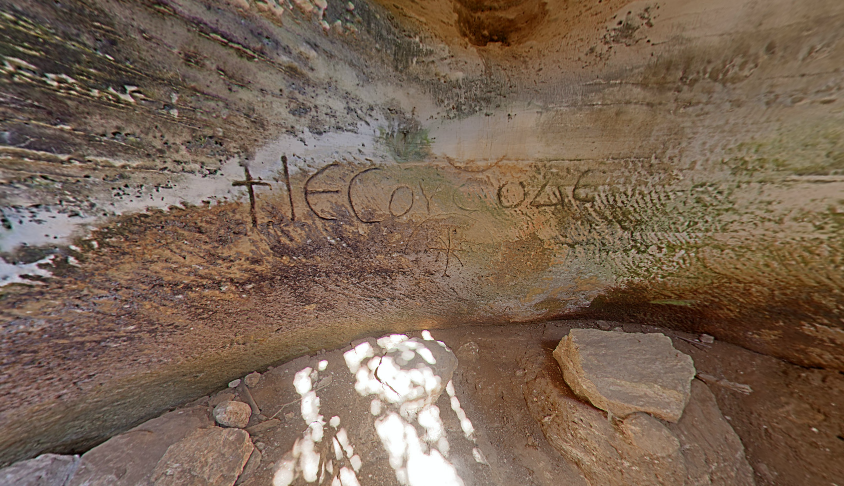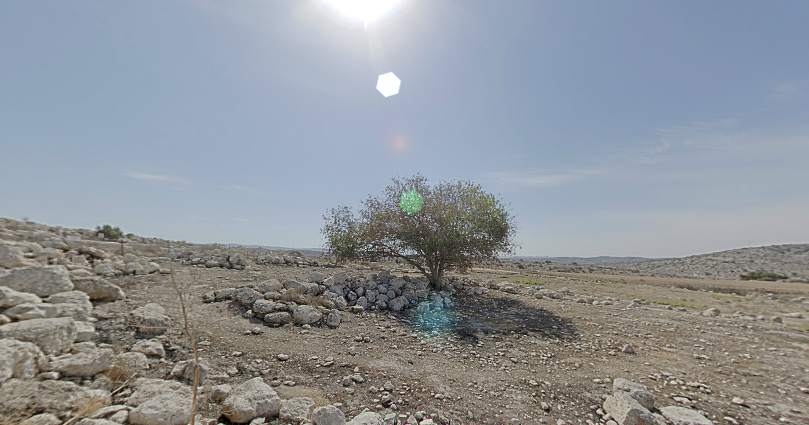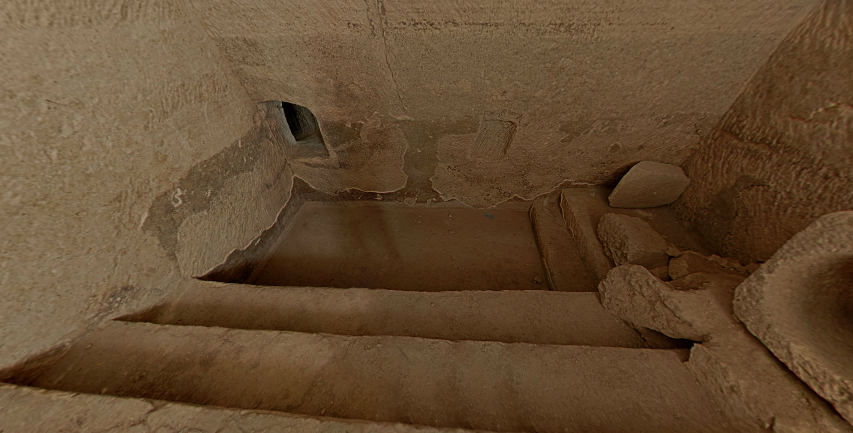Israel & USA- Two Promised Lands
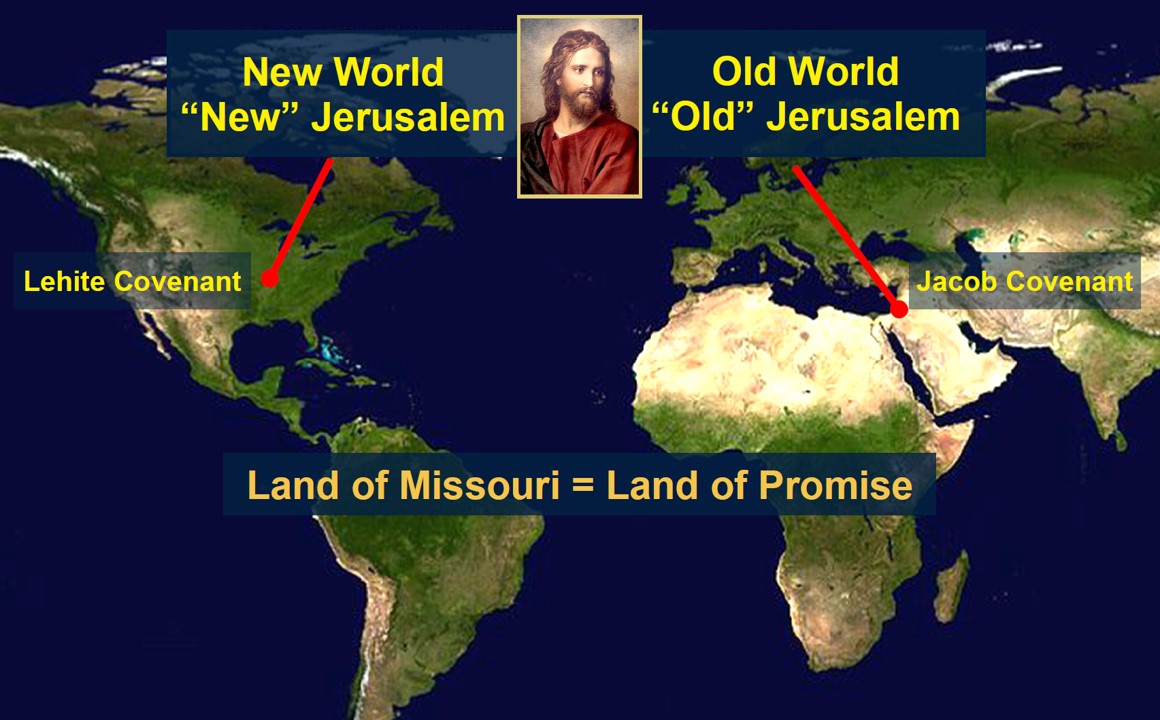
Why does the geography of the Book of Mormon matter? Think of that question if we are speaking about Israel. Does it matter where the Savior was born, or where the Biblical events happened? Yes. At Mount Moriah where Abraham was to sacrifice Isaac, the Lord made a special covenant with Abraham. The land around Mt Moriah was a covenant land and God’s people were given that covenant land as long as they are righteous. However, if they disobey the commandments, God’s people will be swept off that sacred land. The Jews, Muslims, and Christians fight over control over this one piece of land, why? Because it is a beautiful piece of real estate? No, because it is a covenant land. All three religions say Mt Moriah is sacred to them and they are willing to die over it.
Because of unrighteousness God’s people were swept off the land Israel. Look at what happened to Lehi. They were righteous and told to leave for another promised land, the United States of America. Elder Perry said, “The United States is the promised land foretold in the Book of Mormon—a place where divine guidance directed inspired men to create the conditions necessary for the Restoration of the gospel of Jesus Christ.” Elder L. Tom Perry Ensign Dec. 2012
According to the Book of Mormon this Promised land must meet certain requirements to be the Promised Land. 1. No Kings upon the land 2. Land choice above all other lands 3. Land of Liberty 4. Land where sacred record is kept 5. Land kept from the knowledge of other nations. 6. Land of the New Jerusalem 7. Gentiles to scatter and afflict the Remnant. 8. The place where the “Marvelous Work and Wonder” happened. These are only 8 of 36 prophesies and promises in the Book of Mormon so it makes sense to me that the USA is the Promised Land. Not Canada, Mexico, England, or South America. See all 36 prophecies in the Annotated Book of Mormon page 510-511.
Just as Israel is a Promised Land forever, so the USA is a Promised Land forever and it does matter where this Promised Land is located. It is in the Heartland of North America. The Nephites practiced the Law of Moses. To do this they needed the following plants and animals to keep the Law. Sheep, Rams, Goats, Bullocks, Doves, Wheat, Barley, and Wine. None of these animals or items are found anywhere in Mesoamerica during the Nephites times, only in the USA. So, the specific land and where things happen is critical to us and especially to the Lord.
If we in the church cannot even decide among ourselves where the Book of Mormon happened, how confusing is that to our youth and adults? The Anti-Mormons love the idea that we don’t even know where our sacred scriptures happened. There are over 100 theories of where the Book of Mormon happened, including, Mesoamerica, Baja, Chile, Malaysia, Honduras, Peru, etc.
I know the Brethren of the Church take a neutral position on the geography of the Book of Mormon. There are many CES instructors and other BYU professors that teach the Two Cumorah theory or Mesoamerican theory, and they say a second Hill Cumorah exists somewhere in Mexico, but they aren’t sure where. I believe there is only one Hill Cumorah which is associated with the Heartland Model of the Book of Mormon. For you and I to take a neutral stand is not required. The Lord told us to read and study, and in the promise to Moroni, He said we may know the truth of ALL things, and that would include knowing the location of the Book of Mormon events. I believe knowledge of the Spirit and of the head, are both important in learning truth. I used to believe in the Mesoamerican theory, but after much research and prayer, I believe the Heartland Model just makes so much sense. Below is another witness of the Promised Land in Israel. Editor
Beit Lehi or House of Lehi near Jerusalem
 “Beit Lehi is a buried city just a few miles southwest of Jerusalem, and is currently under excavation. It received its name from the Bedouin Arabs who reside in the area. There are some very interesting possible correlations with this site and the home of Lehi in the Book of Mormon.” Read more about the place called Biet Lehi which is where Samson killed 1,000 Philistines with the jawbone of a donkey, and likely it was the same location where Lehi and his family lived. This area is sacred to the Jews, Arabs, and Christians. [Editor’s note: Just as Mount Moriah is a sacred place where Isaac was offered as a sacrifice. Just as Adam-Ondi-Ahman and New Jerusalem in Missouri are sacred places. I find no sacred places like this in Mesoamerica or South America.]
“Beit Lehi is a buried city just a few miles southwest of Jerusalem, and is currently under excavation. It received its name from the Bedouin Arabs who reside in the area. There are some very interesting possible correlations with this site and the home of Lehi in the Book of Mormon.” Read more about the place called Biet Lehi which is where Samson killed 1,000 Philistines with the jawbone of a donkey, and likely it was the same location where Lehi and his family lived. This area is sacred to the Jews, Arabs, and Christians. [Editor’s note: Just as Mount Moriah is a sacred place where Isaac was offered as a sacrifice. Just as Adam-Ondi-Ahman and New Jerusalem in Missouri are sacred places. I find no sacred places like this in Mesoamerica or South America.]
Origins of the Name “Beit Lehi”
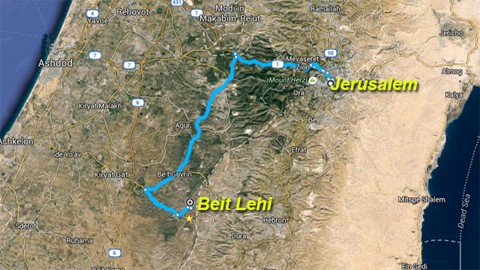 “Almost every town or city is named for something—a person, an event, or a nearby geographical wonder. Beit Lehi is no different. “Beit” in Hebrew means “house or dwelling of,” while “lehi” means “jawbone.” The name “Lehi” seems to have originated in biblical times, apparently referring to the traditional resting place of Samson after he slew one thousand Philistines with the jawbone of an ass. “But God clave an hollow place that was in the jaw, and there came water thereout; and when he had drunk, his spirit came again, and he revived: wherefore he called the name thereof En Hakkore, which is in Lehi unto this day” (Judges 15:19). Thus, Beit Lehi means “dwelling place of Lehi.
“Almost every town or city is named for something—a person, an event, or a nearby geographical wonder. Beit Lehi is no different. “Beit” in Hebrew means “house or dwelling of,” while “lehi” means “jawbone.” The name “Lehi” seems to have originated in biblical times, apparently referring to the traditional resting place of Samson after he slew one thousand Philistines with the jawbone of an ass. “But God clave an hollow place that was in the jaw, and there came water thereout; and when he had drunk, his spirit came again, and he revived: wherefore he called the name thereof En Hakkore, which is in Lehi unto this day” (Judges 15:19). Thus, Beit Lehi means “dwelling place of Lehi.
We suggest identifying the site of Beit Lehi with “Beit Tzedek”, or the “House of Righteousness” mentioned by the Jewish historian Josephus Flavius in the 1st century A.D. Josephus recounts how, during the time of the Great Revolt against Rome (66–70 AD), a group of Jewish rebels escaped to a village by this name.” beitlehi.org
LEHI MANY HERITAGES
“The stamp of Egypt on Lehi’s people may be clearly discerned in the names of those people and their descendants. Hebrew and Egyptian names together make up the overwhelming majority and occur in about equal strength, which is exactly what one would expect from Mormon’s claim that both languages were used among them (and which would certainly not be the case were Hebrew the only spoken language), but Hittite, Arabic, and Ionian elements are not missing…
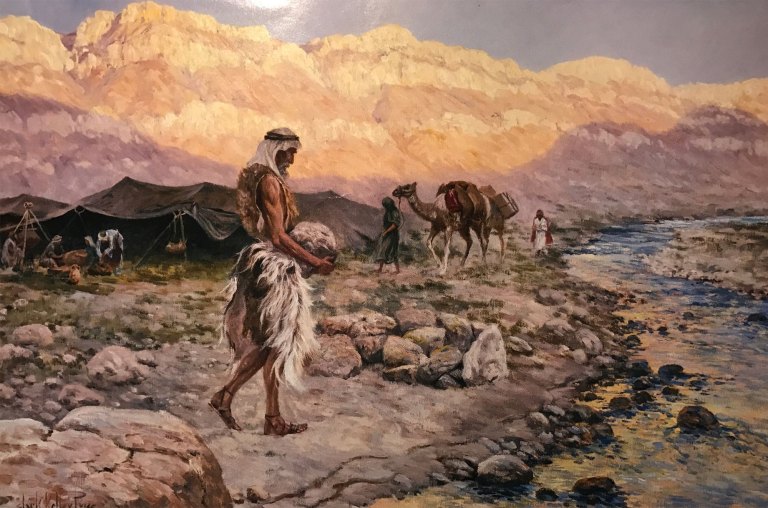
Now of all the tribes of Israel, Manasseh was the one which lived farthest out in the desert, came into most frequent contact with the Arabs, intermarried with them most frequently, and at the same time had the closest traditional bonds with Egypt. 38 And Lehi belonged to the tribe of Manasseh (Alma 10:3). The prominence of the name of Ammon in the Book of Mormon may have something to do with the fact that Ammon was Manasseh’s nearest neighbor and often fought her in the deserts east of Jordan; at the same time a prehistoric connection with the Ammon of Egypt is not at all out of the question. 39 The seminomadic nature of Manasseh might explain why Lehi seems out of touch with things in Jerusalem. For the first time he “did discover” (1 Nephi 5:16), from records kept in Laban’s house, that he was a direct descendant of Joseph. Why hadn’t he known that all along? Nephi always speaks of “the Jews who were at Jerusalem” (1 Nephi 2:13) with a curious detachment, and no one in First Nephi ever refers to them as “the people” or “our people” but always quite impersonally as “the Jews.” It is interesting in this connection that the Elephantine letters speak only of Jews and Aramaeans, never of Israelites…
- The caravans of Egypt and Israel pass each other, guided through the sands by those men of the desert (Arabs) who were the immemorial go-between of the two civilizations.”Lehi in the Desert, I Hugh Nibley, Ph. D. Men of the East- Strange Names
The Man Lehi has ties with all 4 names below:
Arab: Arab designates a way of life, and was applied by the Jews to their own relatives who remained behind in the wilderness. , Manasseh lived furthest out of Jerusalem and had contact with Arabs the most.
Israeli: Of Manasseh through Joseph and the 12 tribes of Israel
Egyptian: Language of Lehi consists of learning of Jews and language of Egyptians: Heritage, culture. Ammon was Manasseh’s nearest neighbor and is an Egyptian name.
Hebrew: Lehi means Jaw Bone in Hebrew. From Eber, Jewish because they live near and around Jerusalem. Learning of the Jews.
Christian: Through Christ, and lived the law of Moses
What names did Lehi and Sariah give to their children?
Arabic Names: Laman, Lemuel
Egyptian Names: Nephi, Sam
Israeli Names: Jacob, Joseph
Biet Lehi Foundation Mission Statement:
“The Beit Lehi Foundation was organized to support the excavation of the Beit Lehi archaeological site, located 22 miles south of Jerusalem, for the benefit of the general public and to advance the understanding and awareness of the general public of ancient religious history associated with this site through scientific research and education. Additional objectives include protection and preservation of the archaeological site, education for visitors and to facilitate the opportunity for families and young people to work at the excavation site under the guidance of a qualified archaeologist and his staff.
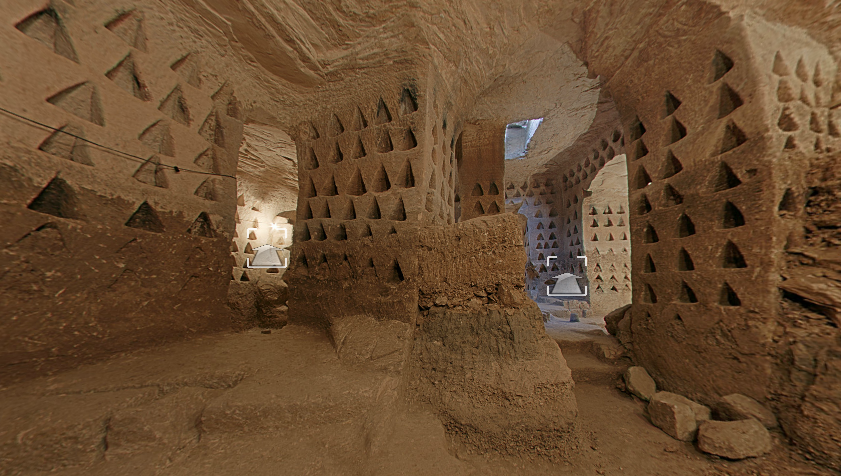 In 1961 Israeli soldiers unearthed a cave that had inscriptions and drawings including the oldest known Hebrew writing of the word “Jerusalem” dated to approximately 600 B.C. by Dr. Frank Cross Moore, Jr. of Harvard University.
In 1961 Israeli soldiers unearthed a cave that had inscriptions and drawings including the oldest known Hebrew writing of the word “Jerusalem” dated to approximately 600 B.C. by Dr. Frank Cross Moore, Jr. of Harvard University.
“I am Jehovah thy Lord. I will accept the cities of Judah and I will redeem Jerusalem”
“Absolve us oh merciful God. Absolve us oh Jehovah”
The drawings depicted men who appeared to be fleeing and two ships.
While investigating the cave, Dr. Joseph Ginat of The University of Haifa met a Bedouin who told him about the remains of an ancient oak tree about 1/4 of a mile away where, according to Bedouin legends and tradition, a prophet named Lehi blessed and judged the people of both Ishmael and Judah. The Bedouin told Dr. Ginat that Lehi had lived many years before Muhammad and that Arab people had built a wall of large rocks around the remains of the tree to protect it as a sacred spot, long known by arab inhabitants as “Beit Lehi”, meaning “Home of Lehi.”
Dr. Ginat shared this information with W. Cleon Skousen whom he had met while studying anthropology at University of Utah and teaching at Brigham Young University from 1970 through 1975.

In 1983 Dr. Skousen and Dr. Glenn Kimber worked with Dr. Ginat and Dr. Yoram Tsafrir of Hebrew University to secure permission and funding to excavate the site. The first excavations began in December 1983. By noon of the first day, archaeologists found an ancient village and well-preserved mosaic floor of a Byzantine era chapel. Since that time, “hewn subterranean installations, including columbaria, olive presses, water cisterns, quarries, a stable, and hideaways,” have been discovered along with pottery and other items suggesting that the area had been populated from 600 B.C. until the Mameluke period of 1500 A.D. The discovery has been featured in the book Ancient Churches Revealed, published in 1993 by the Israel Exploration Society.
After 1986 the site was covered to protect it until additional funds could be raised and conditions were right to continue future excavations.
In 1994 Dr. Kimber and about 40 others, including a number of students, joined Dr. Ginat and Dr. Tsafrir to re-open the site. Since 1994, many groups have visited the site and participated in the excavation.
Dr. Tsafrir, has since retired and according to Israeli law, passed responsibility for archaeological exploration to Dr. Oren Gutfeld of Hebrew University who continues to manage the excavation.
Name History

- What’s in a name? Almost every town or city is named for something, a person, an event or a nearby geographical wonder. Beit Lehi is no different. Beit comes from the Arabic word meaning house or dwelling. Lehi means jawbone. Beit Lehi means the “house” or “dwelling” of the jawbone. An odd name without the rest of the story.
The story begins around 1160 B.C. As recorded in the Bible Judges chapters 13-15, Manoah and his wife have no children, but a man of Manoah’s means and stature in the community must have an heir. He and his wife traveled often to a holy place near their home to make sacrifice and pray for a child. That prayer is heard and answered when an angel appears to his wife and tells her that she will bare a son by God’s providence; that he should be a goodly child, of great strength; by whom the Israelites will be delivered from the hands of the Philistines. He was to be a Nazirite, one who takes a vow of dedication to God. At the time of Samson’s birth, the Israelites had been in bondage to the Philistines for more than 40 years.
Perhaps the strongest man in biblical history, Samson’s impetuous nature causes havoc among the Philistines. He ties torches to the tails of 300 foxes and releases them into the fields of the Philistines destroying all their crops. He kills 30 Philistines when they didn’t play fair in solving a riddle. The Philistines seek to remedy the situation by sending an army of one thousand men to capture Samson who is hiding in the cave of a rock at Etam. The army demands that 3,000 men of Judah capture Samson and deliver him into their hands. With Samson’s consent, the men of Judah bind him with rope and are about to hand him over to the Philistines when he breaks free. Using the jawbone of an donkey that lays at his feet, Samson slays 1,000 Philistines.
Exhausted and near death from thirst, Samson prays for water. Miraculously, a spring bursts forth from the ground to revive the champion. “And when he drunk, his spirit came again and he revived: wherefore he called the name thereof Enhakkore (meaning fountain of the crier), which is in Lehi unto this day.” (Judges 15:19). In writing “The Antiquities of the Jews”, the great Jewish historian Josephus (1st century A.D.) confirms the biblical account and notes that the spring remained vibrant in his day. Samson remained at Lehi for 20 years as a judge of the people of Israel.
More than 3100 years later, Jewish tradition suggests that the spring that gave life to Samson continues to this day near Beit Lehi.” bietlehifoundation.com
Samson’s Well
A deep stone-built well, long known as “Samson’s Well”, is located about a quarter of a mile east of the Jerusalem Cave. It apparently served as the primary source of water for the site throughout antiquity. Local tradition identifies the site with the spring mentioned in the Book of Judges that miraculously appeared to quench Samson’s thirst after he slew one thousand Philistines with the jawbone of an ass in the Valley of Lehi (Judges 15:14–19).


-
A Vandalized Tomb
This rock-hewn burial cave, which measures 7.5 × 10.5 feet, was discovered north of the Byzantine church. It contains three burial troughs and can be accessed by means of a stepped passageway. Four crosses are etched into the wall above the troughs. The cave’s dating was determined by its contents: 26 Early Islamic oil lamps, an intact glass bottle, and fragments of other glass vessels. Vandals apparently broke into the tomb sometime during the Mamluk period (13th–16th century A.D.), threw the contents of each burial trough into the center of the chamber, and left behind a typical juglet (container) of the time period.
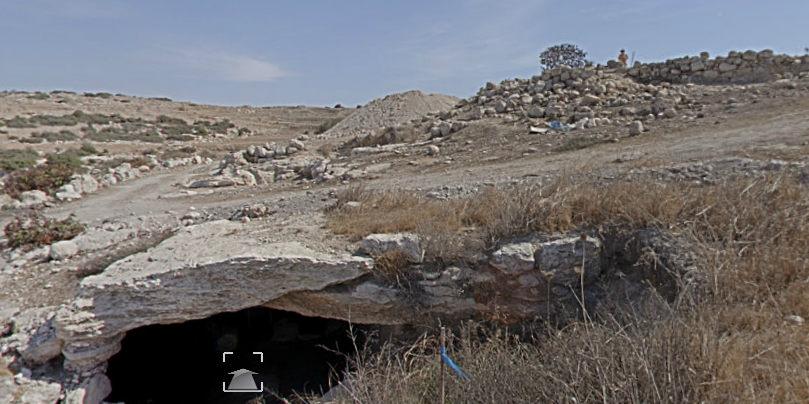 Samson’s Well
Samson’s Well
In October 2005, at the beginning of the excavations in the site of Beit Lehi, one of the students from the Kimber Academy made a survey in the area and found a Hellenistic water cistern (Jesus is Here Cave) dating to the 3rd century BCE. When we entered this water system we couldn’t believe what we saw: a large ancient Greek inscription starting with a cross mentioning the name of Jesus “Yasoos Hodus” in ancient Greek, which means “Jesus is Here.” Below the inscription we found a graffiti of cross with the abbreviation of the two ancient Greek letters chi and rho for Cristos—Christ—and the above the inscription a graffiti of a boat with a person standing on the front of the boat holding the sail, probably Jesus, preaching in the Sea of Galilee. This was probably used as a hermit cell for one of the monks who lived in the site of Beit Lehi in the 5th century CE.
Book of Mormon Linked to Site in Yemen.
A group of Latter-day Saint researchers recently found evidence linking a site in Yemen, on the southwest corner of the Arabian peninsula, to a name associated with Lehi’s journey as recorded in the Book of Mormon. Aston, Lynn Hilton, and Gregory Witt located a stone altar that professional archaeologists dated to at least 700 B.C. This altar contains an inscription confirming “Nahom” as an actual place that existed in the peninsula before the time of Lehi. The Book of Mormon mentions that “Ishmael died, and was buried in the place which was called Nahom” (1 Ne. 16:34).This is the first archaeological find that supports a Book of Mormon place-name other than Jerusalem or the Red Sea, says Brother Witt.
https://www.lds.org/ensign/2001/02/news-of-the-church/lds-scene?lang=eng&query=ancient+altars
See the Biet Lehi Foundation Website Here! http://beitlehifoundation.org/




